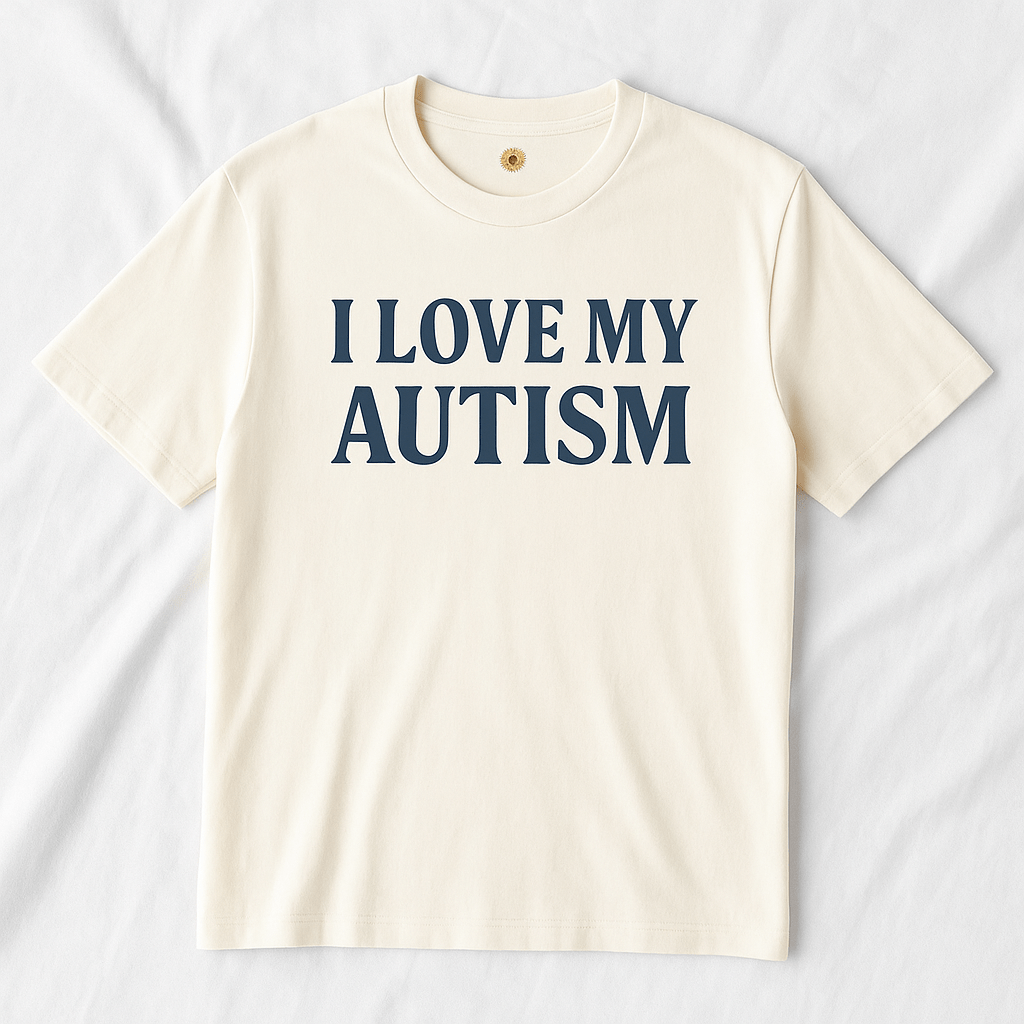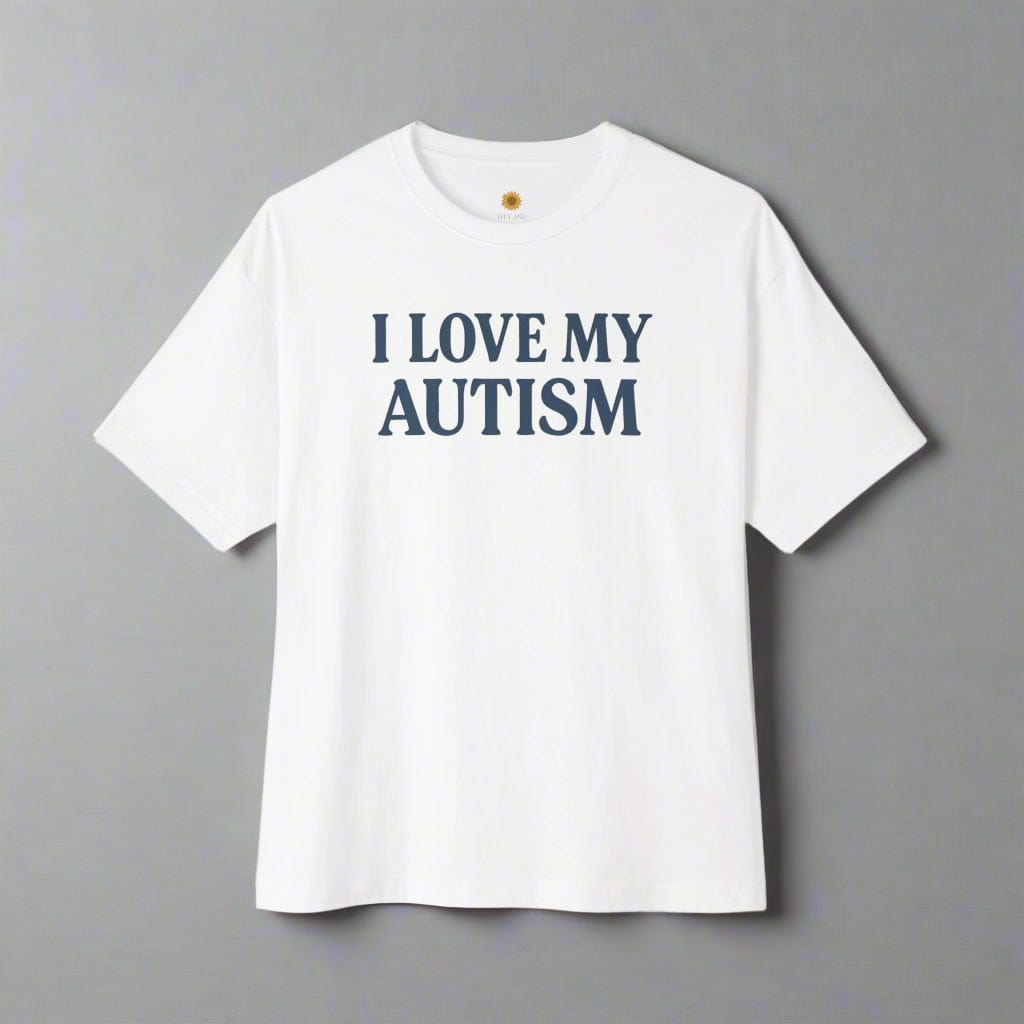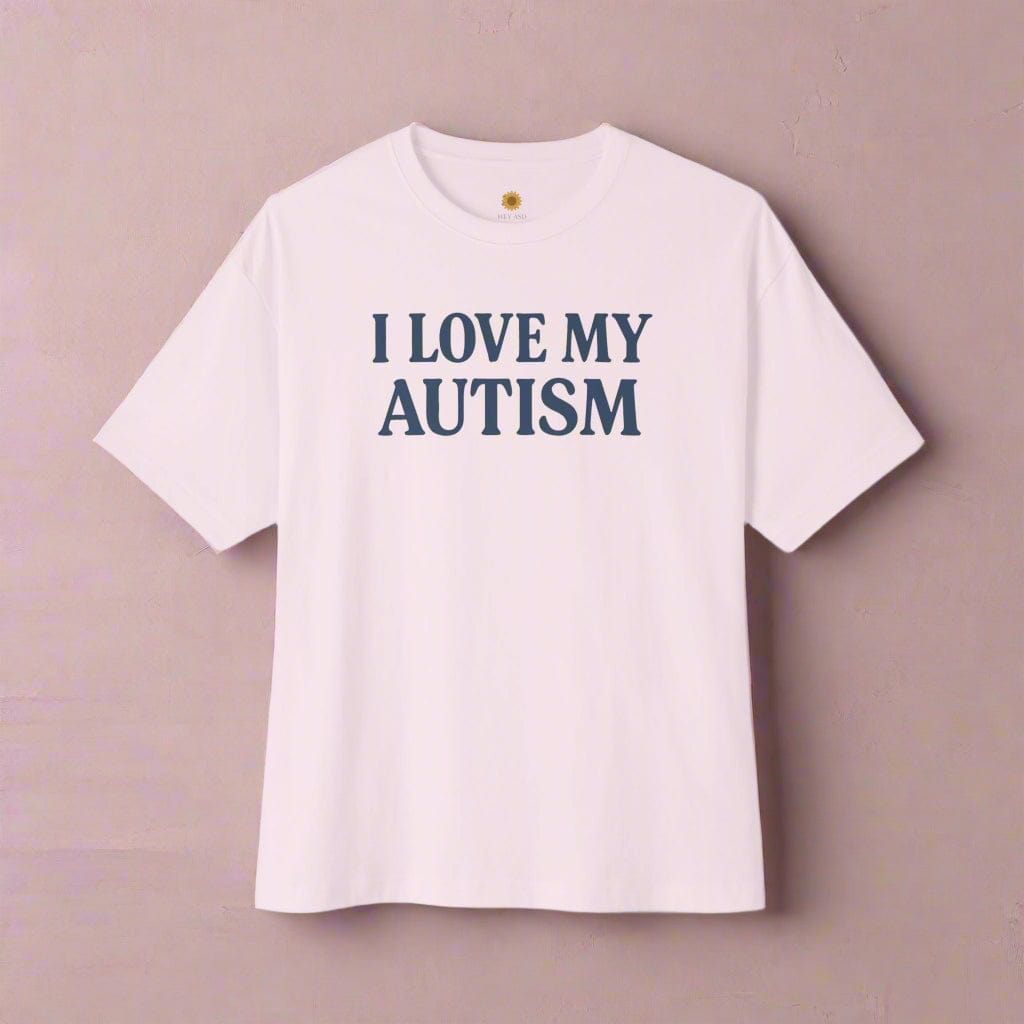Autism and Intellectual Disability: Understanding the Overlap and the Difference

Written by the HeyASD Editorial Team
Have you ever felt uncertain about how autism and intellectual disability connect—or whether they mean the same thing? You’re not alone. Even professionals sometimes blur the lines between the two, which can lead to confusion, stigma, and missed opportunities for the right kind of support. In truth, autism and intellectual disability are distinct neurodevelopmental conditions that can overlap but should never be used interchangeably.
This article gently unpacks the difference. You’ll learn how each is defined, why they sometimes co-occur, and what that means for real-world support and self-understanding. Whether you’re autistic, a parent, or a professional ally, this guide aims to bring clarity, compassion, and confidence to one of the most misunderstood areas in neurodiversity.
What Is Intellectual Disability? A Plain-Language Overview
Intellectual disability (ID), a term that has replaced outdated phrases like "mental retardation," relates to challenges in both cognitive functioning and adaptive behavior. This means a person may have difficulty with reasoning and problem-solving, as well as with daily life skills.
It is vital to understand that an ID diagnosis does not define a person's worth or potential. It simply provides a framework for understanding their support needs. With the right resources and environment, people with ID can lead fulfilling lives. The following sections will look closer at the clinical criteria, support needs, and official definitions.
Clinical Criteria and Practical Definition (IQ Scores & Adaptive Skills)
A clinical diagnosis of intellectual disability is based on two main areas: intellectual functioning and adaptive skills. Intellectual functioning is typically measured using standardized tests that produce an IQ score. A score of approximately 70 or below often indicates significant limitations in cognitive abilities.
However, an IQ score is only part of the picture. A diagnosis also requires an assessment of adaptive skills. These are the practical, everyday skills needed to live, work, and play in the community. They fall into three categories: conceptual (like language and money), social (like getting along with others), and practical (like self-care and job skills).
A person must show challenges in both intellectual functioning and adaptive skills during the developmental period to meet the criteria for ID. This comprehensive approach ensures that the diagnosis reflects real-world functional abilities, not just a test score.
Understanding Support Needs and Life Potential
A diagnosis of intellectual disability is not an endpoint; it is a starting point for identifying the right support. The goal is always to enhance a person's quality of life and independence. Support is tailored to the individual and can vary widely depending on their specific strengths and challenges.
Understanding these needs allows families, educators, and the community to provide meaningful assistance. This isn't about "fixing" someone but about creating an environment where they can thrive. The right support makes a world of difference in navigating everyday tasks and achieving personal goals.
Support might include:
-
Help with daily routines like hygiene and meal preparation.
-
Assistance with managing finances or using public transportation.
-
Specialized instruction in academic or vocational settings.
-
Tools and strategies to improve communication and social interaction.
Authoritative Sources: How the DSM-5 and WHO Define Intellectual Disability
To ensure consistency in diagnosis, clinicians rely on authoritative sources like the Diagnostic and Statistical Manual of Mental Disorders (DSM-5), published by the American Psychiatric Association. The DSM-5 defines intellectual disability (also called intellectual developmental disorder) by deficits in both intellectual and adaptive functioning that begin during the developmental period.
Similarly, the World Health Organization (WHO) provides diagnostic criteria in its International Classification of Diseases (ICD). The WHO also emphasizes that intellectual disability involves "significant limitations both in intellectual functioning... and in adaptive behavior, which covers many everyday social and practical skills."
Both frameworks move beyond a simple IQ score, requiring a holistic view of a person’s abilities. These official diagnostic criteria from sources like the American Psychiatric Association help guide clinicians in making an accurate assessment, which is the first step toward providing appropriate and respectful support.
What Is Autism? Lived Experience and Clinical Description
Autism is a neurodevelopmental difference that shapes how a person experiences the world. It primarily involves unique ways of communicating, processing sensory information, and understanding social interactions. As part of the neurodiversity movement, we use identity-first language—like "autistic person"—because autism is an integral part of a person's identity, not something to be separated from them.
It's a common myth that all autistic people have the same level of intelligence. In reality, cognitive abilities vary just as widely among autistic people as they do in the non-autistic population. This section explores the core features of autism and the importance of an identity-affirming perspective.
Core Features—Communication, Sensory Processing, Social Understanding
Autism is defined by a distinct set of characteristics that are present from early childhood. These are not deficits but differences in how the brain is wired. Understanding these core features is key to understanding the autistic experience.
The main areas of difference include social communication and interaction, as well as sensory processing and repetitive behaviors, sometimes called stimming. For many autistic people, these traits are not problems to be solved but are natural parts of who they are.
Key features often include:
-
Social Differences: May find non-autistic social cues confusing or prefer different ways of connecting with others. Eye contact might be uncomfortable.
-
Communication Styles: May communicate directly, use non-speaking methods, or have a unique pace and rhythm in conversations.
-
Sensory Differences: May be more or less sensitive to light, sound, touch, or other sensory input. A weighted sensory blanket can provide comfort.
-
Repetitive Behaviors: Engaging in stimming, like hand-flapping or rocking, to self-regulate or express emotion.
Embracing Neurodiversity: Identity-First Language and Autistic Strengths
Neurodiversity is the idea that differences in brain function are a natural part of human variation. It reframes autism not as something wrong, but as a different way of being. This perspective fosters acceptance and respect for all autistic individuals.
Part of embracing neurodiversity is using identity-first language ("autistic person"). This language is preferred by many autistic adults as it acknowledges that autism is a core part of their identity. It’s a shift away from seeing it as an affliction someone "has." Expressing autism pride through items like autism t-shirts or autism hoodies is one way the community celebrates this identity.
This affirming approach also allows us to recognize autistic strengths, which can include:
-
Strong attention to detail and pattern recognition.
-
Deep focus and expertise in areas of interest.
-
A strong sense of justice and loyalty.
-
Creativity and a unique perspective on the world.
Intelligence Variation Within Autism Spectrum
A crucial point to understand is that autism is not linked to any specific level of intelligence. Autistic people can have a wide range of cognitive abilities, from profound intellectual disability to a very high IQ, with many having an average IQ. The idea that all autistic people have intellectual challenges is a harmful stereotype.
Standard intelligence tests can sometimes be misleading for autistic people. For example, a test that relies heavily on verbal skills might not accurately measure the cognitive abilities of a non-speaking autistic person. Research has shown that some autistic children score significantly higher on nonverbal intelligence tests than on verbal ones.
This is why a person's intelligence should never be assumed based on their diagnosis or their communication style. As Patrick Kelly, a direct-support professional and autistic man, states, "We’re weird, there’s no denying that. But there’s a difference between being different and straight up not understanding things."
Why Do People Confuse Autism and Intellectual Disability?
The confusion between autism and intellectual disability stems from a few key areas, including historical diagnostic practices and overlapping traits. In the past, the two were often seen as inseparable. Some surface-level behaviors, like developmental delay or differences in social communication, can look similar in both conditions, leading to misinterpretation.
However, the underlying reasons for these behaviors are different. For an autistic person, a social challenge might be about interpreting confusing social cues, while for a person with ID, it might relate to broader cognitive processing. Understanding these historical and clinical overlaps helps clarify why the confusion exists.
Historical Perspectives and Diagnostic Changes
Historically, the lines between autism and intellectual disability were very blurry. For many decades after autism was first described, a majority of autistic people were also diagnosed with what was then called mental retardation. The two conditions were often seen as one and the same.
Diagnostic tools and manuals have evolved significantly over time. For instance, the American Psychiatric Association's diagnostic manuals have refined the criteria for autism. Previous editions included categories like "pervasive developmental disorder-not otherwise specified" (PDD-NOS), which sometimes added to the confusion. The current DSM-5 provides a more specific framework for an autism spectrum diagnosis.
These changes in diagnostic practices have helped clinicians better distinguish between the conditions. As our understanding has grown, the co-occurring diagnosis rate has dropped from nearly 70% in the 1980s to around 30% today, reflecting more precise assessments.
Overlapping Traits That Cause Confusion
Certain traits can appear in both autistic people and those with intellectual disability, which can make diagnosis challenging. A developmental delay, for example, is a common feature in both. An observer might see similar behaviors, but the reasons behind them are distinct.
The key is to look beyond the behavior itself and consider the "why." For example, a child may not respond when their name is called. In an autistic child, this might be due to intense focus on another activity or sensory overload. In a child with ID, it could be related to a general difficulty in processing language.
Some of the most common overlapping areas include:
-
Developmental Delays: Slower to reach milestones in areas like language or motor skills.
-
Social Differences: Challenges in navigating non-autistic social norms and interpreting social cues.
-
Language Skills: Delays in speech or having a different communication style.
-
Adaptive Behavior: Difficulties with certain daily living skills.
How Screening and Assessment Distinguish Between Them
A thorough diagnostic process is essential to tell the difference between autism, intellectual disability, or both. Clinicians use a combination of tools and observations to make an accurate diagnosis of ASD. This process should not be rushed and should consider the whole person.
The assessment typically includes specific diagnostic tools for autism, like the Autism Diagnostic Observation Schedule (ADOS), which observes social communication and behaviors. It also involves a comprehensive evaluation of cognitive abilities, often through an IQ test, and an assessment of adaptive skills to screen for intellectual disability.
By using these different measures, a clinician can determine if social differences are more significant than what would be expected for a person's overall developmental level. As Somer Bishop, a clinical psychologist, explains, "What’s at stake is the state of our science. I think that if we lose all the specificity of what makes each [condition] unique in its own right, then we’re slowing down discovery."
How Common Is It for Autism and Intellectual Disability to Co-Occur?
While autism and intellectual disability are separate conditions, they can occur together. Research shows that a significant portion of autistic people also meet the criteria for ID. This is a co-occurrence, meaning one does not cause the other; they are two distinct developmental disabilities that can be present in the same person.
Understanding this prevalence is important for ensuring that autistic children and adults with a co-occurring intellectual disability receive comprehensive support that addresses both their autistic traits and their learning needs. The following sections explore the statistics and what this co-occurrence can look like.
Key Statistics (CDC/WHO): Prevalence Rates in the United States
Data from sources like the Centers for Disease Control and Prevention (CDC) helps us understand the prevalence of co-occurring autism and intellectual disability. According to reports, the rate of this dual diagnosis has changed over time as diagnostic practices have improved.
In the United States, as of 2014, about 30% of autistic children also had a diagnosis of intellectual disability. This is a significant decrease from the 1980s, when the figure was as high as 69%. This change highlights how clinicians have become better at distinguishing between the two conditions.
This statistic underscores that while a majority of autistic people do not have an intellectual disability, a substantial minority does. This makes it a critical area for awareness, research, and support.
|
Condition |
Prevalence Among Autistic Individuals (approx.) |
|---|---|
|
Autism with Co-occurring Intellectual Disability |
30% |
|
Autism without Intellectual Disability |
70% |
What Co-Occurrence Looks Like in Daily Life
When an autistic person also has an intellectual disability, their experience is a unique blend of both. The support they need will be different from an autistic person without ID or a person with ID who is not autistic. It requires a personalized approach that honors all aspects of who they are.
A family member may notice from early childhood that the person needs support in multiple areas of adaptive function. For example, the sensory sensitivities of autism might be combined with challenges in learning new routines due to the intellectual disability. Their profile of strengths and needs will be entirely their own.
In daily life, this might involve:
-
Needing more explicit, step-by-step instructions for tasks.
-
Having significant challenges with both verbal and nonverbal communication.
-
Requiring support with motor skills alongside navigating social situations.
-
Benefiting from therapies that address both learning and sensory regulation.
Genetic and Developmental Links: What Current Research Shows
Modern genetic research, including studies from institutions like the research hospital of NIH, has revealed a complex relationship between autism and intellectual disability at a biological level. Scientists have found that many of the same genes can be associated with both conditions.
A 2020 review of the literature found no single gene that increases the chances of autism without also raising the odds of intellectual disability or a related developmental delay. This genetic overlap helps explain why the traits can sometimes appear together and be difficult to untangle clinically.
This doesn't mean the conditions are the same. It suggests that many genes involved are critical for overall brain development, and different changes in these genes can lead to different outcomes. Researchers are still working to understand how specific genetic factors contribute more to one condition versus the other, which could lead to more tailored support in the future.
The Differences and Similarities Between Autism and Intellectual Disability
To truly understand the relationship between autism and intellectual disability, it helps to see their features side-by-side. The core difference lies in the primary areas of impact: autism is mainly defined by social communication and sensory processing, while ID is defined by general cognitive function and adaptive behavior.
Despite these differences, similarities in areas like developmental milestones and daily living skills can cause confusion. The following comparison table and discussion will clarify these distinctions and highlight why a precise diagnosis of autism or a diagnosis of intellectual disability matters for empowerment and support.
Comparison Table: Core Features, Onset, Adaptive Functioning, Testing
A side-by-side look can make the distinctions between autism and intellectual disability clearer. While both are lifelong conditions that appear in early childhood, their fundamental characteristics are different.
Autism's core features are about how a person processes social and sensory information. In contrast, intellectual disability is about general limitations in cognitive function and the adaptive skills needed for daily independence.
This table summarizes the key distinctions:
|
Feature |
Autism |
Intellectual Disability |
|---|---|---|
|
Core Difference |
Differences in social communication, sensory processing, and repetitive behaviors. |
General challenges in cognitive function (reasoning, problem-solving) and adaptive skills. |
|
Onset |
Early childhood |
Early childhood |
|
Common Overlap |
Social understanding, daily living skills, and communication. |
May amplify or mask autistic traits during assessment. |
|
Primary Testing |
Behavioral observation tools (e.g., ADOS), developmental history. |
IQ tests and assessments of adaptive skills. |
Real-World Implications for Diagnosis, Support, and Empowerment
Getting the diagnosis right is more than just a label; it is the key to unlocking the right support and fostering a positive identity. A clear diagnosis helps everyone—the person, their family, and educators—understand the true nature of their strengths and challenges, leading to better mental health and quality of life.
For example, an autistic person might be thought to be "non-compliant" when they are actually experiencing autistic burnout. Understanding this leads to compassion and accommodation, not punishment. Clarity empowers families and individuals to advocate for what they truly need. It also builds a foundation for self-acceptance and connection with the autistic community.
A correct diagnosis impacts:
-
Education: Ensuring access to appropriate special education programs and classroom accommodations.
-
Therapies: Guiding the choice of therapies that are affirming and effective.
-
Self-Advocacy: Empowering autistic adults to understand their needs and communicate them to others.
-
Community: Connecting with others who share similar experiences, whether online or in person.
Key Takeaways: Autism & Intellectual Disability
- Autism and intellectual disability are distinct conditions — autism affects social and sensory processing, while ID affects general cognitive and adaptive skills.
- Roughly 30–40% of autistic people also meet criteria for an intellectual disability, but most do not.
- Confusion often stems from overlapping traits like communication challenges or developmental delays, though the causes differ.
- Accurate understanding leads to better support in education, healthcare, and daily life, ensuring dignity and inclusion for every person.
- Labels should inform care, not limit potential — every autistic and intellectually disabled person deserves respect and autonomy.
Conclusion
Understanding the difference between autism and intellectual disability isn’t about drawing dividing lines—it’s about seeing each person clearly. When we recognize that autism is a way of experiencing the world and intellectual disability describes certain learning and adaptive needs, we open the door to more accurate support and deeper respect.
Not every autistic person has an intellectual disability, and not every person with an intellectual disability is autistic. But all deserve understanding, access, and dignity. Labels can guide support, but they should never define worth. The more precisely we understand these conditions, the more fully we can empower people to live authentically—on their own terms.
Made for and by Autistic Adults
Every Hey ASD design is created with sensory comfort, pride, and inclusion in mind. Explore our community-made collections built to help you feel calm, seen, and supported in your daily life.
Explore Autism TeesFrequently Asked Questions
Can someone have autism without an intellectual disability?
Yes, absolutely. The majority of autistic people—about 70%—do not have an intellectual disability. The autism spectrum includes people with all levels of cognitive abilities, and many have average or above-average IQ. A diagnosis of autism is based on social and sensory differences, not intelligence.
What does co-occurring autism and intellectual disability look like?
It looks different for everyone. A person might have the sensory sensitivities and communication style of autism combined with the learning challenges of an intellectual disability. This can lead to a need for more support with adaptive behavior and daily life tasks, addressing both their learning profile and autistic traits.
Is it difficult to distinguish between autism and intellectual disability?
It can be, especially since some traits overlap. A comprehensive evaluation by a trained clinician is key. They use specific diagnostic criteria and tools like the Autism Diagnostic Observation Schedule (ADOS), alongside cognitive tests, to differentiate between challenges in social communication due to autism versus those related to general cognitive function.
What are the key characteristics that differentiate autism from intellectual disabilities?
The core difference is what defines the condition. Autism is defined by a unique profile of social interaction, sensory processing, and repetitive behaviors. Intellectual disability is defined by significant limitations in general intellectual functioning (reasoning, learning) and adaptive skills (daily self-care).
How can autism manifest in individuals with varying levels of intelligence?
Autism manifests through its core features regardless of intelligence. An autistic person with a high IQ will still have autistic ways of communicating and processing the world, though they may mask them. Similarly, an autistic person with lower cognitive abilities will also show these core autistic traits alongside their learning challenges.
What resources are available for individuals on the autism spectrum who may also have an intellectual disability?
Support services often come from multiple sources. These can include special education programs through schools, state-level developmental disability services, and vocational rehabilitation programs. Many organizations offer resources, and secure websites from government agencies and non-profits provide guidance on accessing support. Check for local advocacy groups and community programs.
How can parents and caregivers support a child with both autism and an intellectual disability?
The best support is person-centered. Focus on understanding your child’s unique profile of strengths and needs. Advocate for comprehensive evaluations to get the right support in school and therapy. Break down everyday tasks into manageable steps, use visual aids, and prioritize their quality of life by celebrating who they are.
Sources:
-
Srivastava, A. K., & Schwartz, C. E. (2014). Intellectual disability and autism spectrum disorders: Causal genes and molecular mechanisms. Neuroscience and biobehavioral reviews, 46 Pt 2, 161–174. https://www.ncbi.nlm.nih.gov/pmc/articles/PMC4185273/
-
Chiurazzi, P., Kiani, A. K., Miertus, J., Barati, S., Manara, E., Paolacci, S., Stuppia, L., Gurrieri, F., & Bertelli, M. (2020). Genetic analysis of intellectual disability and autism. Acta bio-medica : Atenei Parmensis, 91(13-S), e2020003. https://www.ncbi.nlm.nih.gov/pmc/articles/PMC8023126/
-
Sohn, E. (2020). The blurred line between autism and intellectual disability. Spectrum. https://www.spectrumnews.org/features/deep-dive/the-blurred-line-between-autism-and-intellectual-disability/
-
American Psychiatric Association. (2013). Diagnostic and statistical manual of mental disorders (5th ed.). https://www.psychiatry.org/psychiatrists/practice/dsm
-
World Health Organization. (2022). International classification of diseases (11th ed.). https://www.who.int/standards/classifications/classification-of-diseases
-
Centers for Disease Control and Prevention. (2022). Data and Statistics on Autism Spectrum Disorder. https://www.cdc.gov/ncbddd/autism/data.html



















